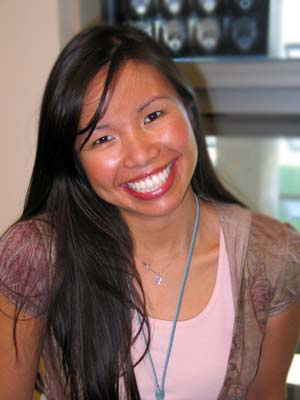

It takes a fast mover to accomplish everything Michelle Khine gets done in a day, and you’ll hear it in the pace of her speech when you talk with her.
Like many faculty members at UC Merced, she’s serving on review panels and committees, teaching courses and training and mentoring students who work in her lab.
She’s building a microfabrication facility at UC Merced with the help of Lawrence Livermore National Laboratory and the Berkeley Microlab.
She’s developing a four-campus course with UCSF, UC Berkeley and UC Santa Cruz to teach students how to develop devices that can be used to diagnose infectious diseases in developing countries.
She’s also working on stem cell research funded by California Proposition 71, getting involved with entrepreneurship efforts on campus and even caring for a puppy she’s recently adopted.
“When you’re starting something from the ground floor, things happen fast,” she said, recalling the early days of the company she helped to found while she was in graduate school, based on her dissertation work at UC Berkeley, Fluxion Biosciences. That operation received startup funding from the National Institutes of Health and is now flourishing, making chips and instruments in its San Francisco headquarters.
Khine says she’s interested in getting involved with UC Merced’s planned entrepreneurship center, now in the capital-raising stage.
She’s also collaborating with many other UC Merced professors on “a bunch of different projects.”
“I’m the toolmaker on the floor,” she said. “All this cooperation just stems from conversations about instruments.”
She ends up helping colleagues create the means to make new discoveries about how chemical cues affect cell movement, how stem cells determine when and how to differentiate, and her current Prop 71 project with Kara McCloskey and Wei-Chun Chin, how to influence stem cells to change in a specific way - to become cardiovascular cells suitable for transplantation. Khine’s instruments are remarkable for their ability to examine cells at high spatial and temporal resolution, so she and her colleagues can track a particular cell over time with precision.
In the end, Khine says, she knows she’ll look back on this busy time with satisfaction.
“I can imagine no greater legacy than to have helped start a great university,” she said.






